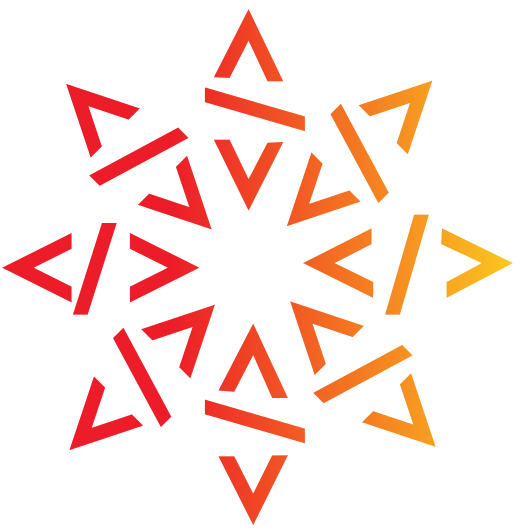About software preservation: a reading list based upon “Towards Preserving Digital Culture”, the interviews series by Camille Françoise

Our Software Heritage ambassador Camille Françoise asked experts, with different backgrounds, to share their thoughts on software preservation in an interview series published in Medium. This blogpost will give you an overview of the series.
Camille Françoise is a passionate open culture advocate. Camille is Product Manager Research and Heritage at the Netherlands Institute for Sound and Vision, where she oversees multiple European projects & activities around new media such as immersive reality, video games, interactive documentaries, software, hardware & overall digital-born collections.
Camille asked the interviewed experts to share with us a blog post, an article or a publication that they particularly appreciated.
Amy Thomas, Lecturer in Intellectual Property & Information Law, University of Glasgow
“The Survey of the Video Game Reissue Market in the United States (2023) was very influential for me in sparking an interest in video game preservation. It has an interesting methodology and stark, powerful findings that evidence how serious this issue is (e.g., that 87% of classic games in the US are out of print) — after reading this, there is no doubt we are living through a real time loss of culture.”
Avinash Changa, Founder & Director of WeMakeVR, Creative Technologist
“[…] It is good to see that the topic of preservation is on the radar, as this Siggraph-paper indicates, Preserving Virtual Reality, Zeyned Abes, 2023.”
Brandon Butler, Copyright Lawyer & Director of Intellectual Property and Licensing, University of Virginia Library
“In addition to the work that Software Preservation Network has done on fair use and copyright, I’m proud of our recent collaboration with the Video Game History Foundation to produce a study on the video game market, which helped to show that most historic video games are not available on the market. That means it’s up to the cultural heritage sector to keep that culture alive.”
Caylin Smith, Digital Preservation Manager, Cambridge University Libraries
“I’ve learned lots about old software and hardware from the content Foone Turing writes about.
Tom Ensom and Jack McConchie lead a group about caring for immersive media, specifically virtual reality, augmented reality, mixed reality, 360 video, real-time 3D software, and other similar materials:
The No Time to Wait! conference initially focused on audio-visual preservation but has grown over the years to also include presentations about content that requires software and hardware preservation, including time-based media artworks and videogames.”
Dragan Espenschied, Preservation Director, Rhizome
“The 2010 novel The Lifecycle of Software Objects by Ted Chiang manages to inhabit the perspective of software, and how it is pulled into different directions as it becomes used, licensed, re-purposed, etc. An important research resource is Ethan Gates’ Emulation Bibliography which collects articles about using emulation for preservation purposes.”
Gaby Wijers, Director and Founder of LI-MA
- Annet Dekker and Patricia Falcão, Innterdisciplinary Discussions about the Conservation of Software-Based Art (2017).
- Dragan Espenschied Klaus Rechert, SOFTWARE PRESERVATION AFTER THE INTERNET, 2023.
Jakob Moesgaard, Research Librarian, The Royal Library of Denmark
“I really like Trevor Owens’ book from 2018 called The Theory and Craft of Digital Preservation. It is an excellent all-round introduction to the subject!
Additionally, I would absolutely recommend anyone to read Replayed — a brand new collection of the writings of Henry Lowood, who has long been a hero of mine in the field of videogame preservation.
As for my thoughts on digital (videogame) culture and the praxis of trying to preserve that (whatever that is), I am definitely inspired by the brilliant Miguel Sicart (and funny, too!).”
Kenneth Seals-Nutt, Software Engineer & Researcher, Co-founder of Science Stories
- Replayed: Essential Writings on Software Preservation and Game Histories by Henry Lowood
- The Computer by Jens Müller.
- IT Girls: Pioneer Women in Computing by John S. Croucher.
Recent Blog post I enjoyed: Building Connected Libraries in Nigeria, Reflexions from the Wikibase Journey.
Morgan Stricot, Media and Digital Art Conservator, ZKM Center for Art and Media Karlsruhe
Margit Rosen, “Obsoleszenz und Ewigkeit. Zum drohenden Verlust des digitalen künstlerischen Erbes”, In: Elisabeth Ehrensperger, Jeannette Behringer, Michael Decker, et al, (Ed.), Gestreamt, gelikt, flüchtig — schöne neue Kulturwelt?, 2024 (forthcoming publication).
Patricia Falcão, Time-based Media Conservator & Researcher
“I have been reading and going back to two papers by Dragan Espenchied and Klaus Rechert that I highly recommend, ‘Fencing Apparently Infinite Objects’ and ‘Software Preservation after the Internet’.” (Espenschied and Rechert 2023; 2018)
- Conway, Jane. 1997. ‘PSALMS — ◯ ◯ ◯’. 12 October 1997.
- Engel, Deena, and Glenn Wharton. 2015. ‘Source Code Analysis As Technical Art History’. Journal of the American Institute for Conservation 54 (2): 91–101.
- Espenschied, Dragan, and Klaus Rechert. 2018. ‘Fencing Apparently Infinite Objects’. In Proceedings of the 15th International Conference on Digital Preservation (iPRES). Boston, Mass: IPRES.
- — — — . 2023. ‘Software Preservation after the Internet’. In Proceedings of the 19th International Conference on Digital Preservation. Champaign-Urbana, IL, US.
- Falcão, Patricia. 2010. ‘Developing a Risk Assessment Tool for the Conservation of Software- Based Artworks’.”
Paul Wheatley, Head of Research & Practice, Digital Preservation Coalition
“I often think back to the very first article I read when I began my career in this sector, which was recommended to me by Dr David Holdsworth — a computer scientist I was fortunate to work with and who set me on course for a career in this fascinating field. The paper can be found in the Bulletin of the Computer Conservation Society and it’s written by Doron Swade. He talks about what it really means to preserve software from his perspective as a curator at the Science Museum in London, way back in 1993. Reading it was certainly a light bulb moment for me in relation to software preservation. Sadly the museum sector just hasn’t been funded well enough to take a lead in digital preservation over the last few decades, but it’s great to see museums focusing more on this area in recent times. DPC has a really active museums working group which is great as I think we all have a lot to learn from working with our museum based colleagues.”
Tom Ensom, Digital Conservator
“Recently I really enjoyed this discussion between Elena Cordov and Eddy Colloton for the VoCA Journal. It’s a frank and pragmatic look at the nature of our efforts to care for time-based media art, foregrounding an inclusive, flexible and ultimately kind approach that I really like. Software preservation can feel overwhelming and I have to remind myself that it’s not about preserving this thing forever right now or having all the answers — as Eddy puts it, “you just have to get the baton to the next person.”
Wendy Hagenmaier, Software Preservation Manager, Yale University
“Software Preservation Network has published so many important and immediately useful resources:
- Software Metadata Recommended Format (SMRF) Guide, Version 1.1.0, created by the Metadata Working Group
- Survey of Video Game Reissue Market in the United States (co-published with the Video Game History Foundation and led by Phil Salvador), which was also recommended by Amy Thomas in her interview for this series
- Supporting Software Preservation Services in Research and Memory Organizations, the study I mentioned, conducted by the Research-in-Practice Working Group
- A wealth of guides related to law and policy that are relevant to practitioners in the U.S. and Canada and could be models for law and policy work in other jurisdictions
- Plus webinars, presentations, a bibliography and more
For those interested in learning more about emulation and Emulation-as-a-Service Infrastructure, I highly recommend these beautiful Training Modules created by my colleague Ethan Gates.
And for those interested in collaboration and envisioning new ways of working together, I recommend:
- A Green New Deal for Archives, by Eira Tansey, which I mentioned
- The Art, Science, and Magic of the Data Curation Network: A Retrospective on Cross-Institutional Collaboration, from the Data Curation Network
- Beloved Economies, by Jess Rimington and Joanna L. Cea
- It Takes a Village: Open Source Software Sustainability, from Lyrasis
- Reaching out to me with your own recs! I’d love to learn from them.”
Let’s stay in touch
Did you enjoy this content? Would you like to share your reading list about software preservation? You too, spread the word via your website and social media! We’d love to hear from you!
Would you like to know more about Software Heritage’s commitment towards legacy software? Check these 2 savvy links:
